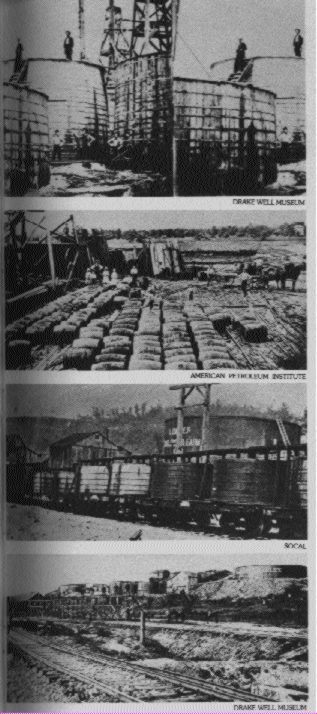| Francois Micheloud's Homepage | En FRANCAIS s'il vous plaît |
 |
| 4.3 Transporters and refiners | ||
| . The transporters Oil fields were often scattered in desolated regions. To sell their oil, the oil diggers had to carry it from their wells to the refineries, and then to the retailers. In the euphoria of the beginnings, oil was carried in casks, first by men, then with horses or carriages, then on trains, boats and finally by pipelines. Each change of mean of transport diminished the cost. The quantities produced were so huge and so imprevisible that it was common to see oil pouring on the ground immediately after it came out of the well, for lack of storage space and of sufficient transportation capacity. The carriers had thus an incredible power on the producers, and nobody missed that. |
. Oil transport from the wells to the refineries in 1862 already, the oil regions produced 3 millions barrels a day, and the demand to stock and carry it was enormous. From above downward : wooden tanks to store oil, transport by barrels ready to be shipped by train or floated on a river, wholesale transport on special rail cars, and at the bottom a photo of a pipeline terminal. |
|
|
The refiners The oil was poured in big metal bowls which were then heated so that the liquid began to evaporate. The fumes were then guided through copper pipes (Yes, I'm describing a still) where they cooled to fall in enameled basins, separated according to their different boiling points, with the most volatile components coming first and the tar left at the bottom. The liquids had then to be chemically cleaned and let still in other basins. Any person who could find this rather simple equipment could refine oil. At the turn of the century the refining process was changed by the cracking method, which raised the distillation yield considerably. |
||